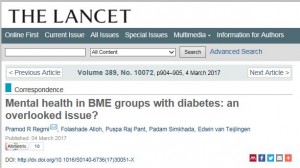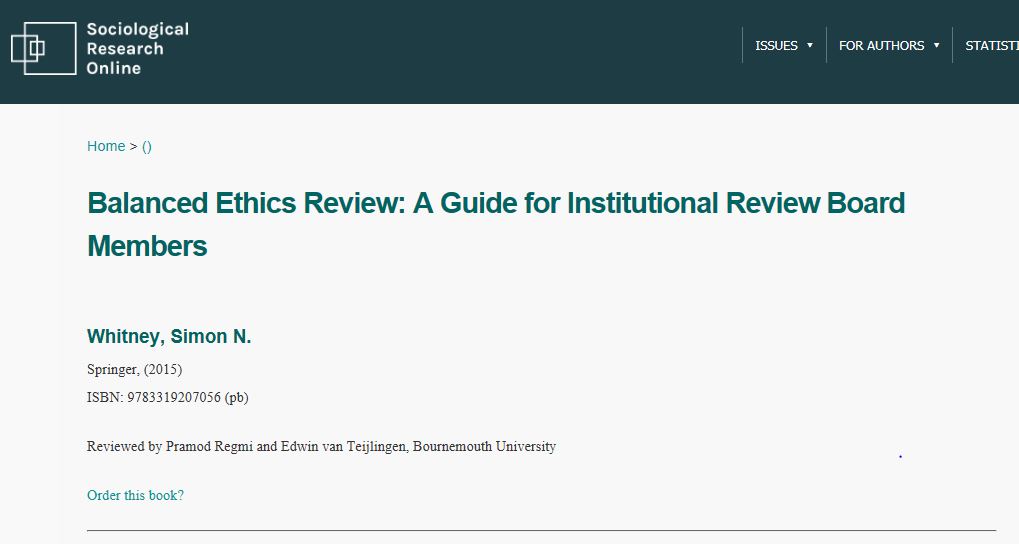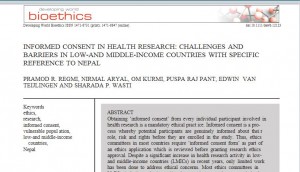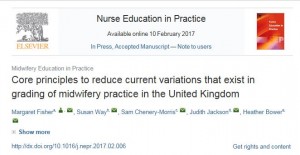Category / Publishing
Need tips on developing a publication strategy?
 Then come along to one of the Writing Academy’s “My publication story so far…” lunchbyte sessions.
Then come along to one of the Writing Academy’s “My publication story so far…” lunchbyte sessions.
The first of 2017, is happening today at midday led by Prof. Matthew Bennett.
Matthew Bennett will be talking about his personal publishing experience, his approaches to research and writing, his tips on developing a publication strategy and working with co-authors, reviewers and editors. He will talk about all types of publishing from journal articles, to books via edited compilations. Drawing on personal experience publishing in Nature, he will also focus on how you target high impact journals.
Future sessions:
Prof. Tim Rees – Wednesday 24th May, 12-1.30pm
Prof. Sara Ashencaen Crabtree – Wednesday 28th June, 12-1.30pm
New midwifery paper by Dr. Jenny Hall
 Congratulations to Dr. Jenny Hall in the Centre for Midwifery, Maternal & Perinatal Health (CMMPH) on the publication of her paper ‘Spiritual aspects of living with infertility: synthesis of qualitative studies’. [1] Dr. Hall co-authored this paper in the Journal of Clinical Nursing with colleagues from Ireland and Portugal.
Congratulations to Dr. Jenny Hall in the Centre for Midwifery, Maternal & Perinatal Health (CMMPH) on the publication of her paper ‘Spiritual aspects of living with infertility: synthesis of qualitative studies’. [1] Dr. Hall co-authored this paper in the Journal of Clinical Nursing with colleagues from Ireland and Portugal.
This international team conducted review and synthesis of qualitative research to seek a deeper understanding of the spiritual aspects of patients’ experiences of infertility. They concluded that infertile couples’ experiences of infertility may offer an opportunity for spiritual care particularly related to the assessment of spiritual needs and the promotion of spiritual coping strategies. Moreover, effective holistic care should support couples in overcoming and finding meaning in this life and health condition.
Prof. Edwin van Teijlingen
CMMPH
Prof. Tim Rees – My publication story so far…
 On Wednesday 24th May, the Writing Academy will be hosting a Lunchbyte session with Tim Rees. During the session Tim will talk about his personal publishing experience, his approaches to research and writing, his tips on developing a publication strategy and working with co-authors, reviewers and editors. He will talk about all types of publishing drawing on personal experience.
On Wednesday 24th May, the Writing Academy will be hosting a Lunchbyte session with Tim Rees. During the session Tim will talk about his personal publishing experience, his approaches to research and writing, his tips on developing a publication strategy and working with co-authors, reviewers and editors. He will talk about all types of publishing drawing on personal experience.
Aims:
- Developing a Publication Strategy
- Dealing with Co-Editors, Reviewers & Editors
- Targeting high impact Journals
Dedicated Time and Space to Write…
 As part of the Writing Academy, a series of writing days have been organised to help support BU authors work on their publications by providing some dedicated time and space, away from everyday distractions.
As part of the Writing Academy, a series of writing days have been organised to help support BU authors work on their publications by providing some dedicated time and space, away from everyday distractions.
The days will have a collaborative focus on productive writing with other BU authors, the RKEO team will also be on hand to provide authors with help and guidance on all areas of the publication process.
Writing Days have been scheduled on the below dates:
- Tuesday 9th May
- Thursday 25th May
- Friday 9th June
- Monday 19th June
- Tuesday 20th June
- Wednesday 5th July
- Thursday 27th July
Spaces are limited so please only book on if you are able to commit to attending for the whole day.
Prof. Matthew Bennett – My publication story so far…
 On Wednesday 29th March, the Writing Academy will be hosting a Lunchbyte session with Matthew Bennett. During the session Matthew will talk about his personal publishing experience, his approaches to research and writing, his tips on developing a publication strategy and working with co-authors, reviewers and editors. He will talk about all types of publishing from journal articles, to books via edited compilations. Drawing on personal experience, he will also focus on how you target high impact journals.
On Wednesday 29th March, the Writing Academy will be hosting a Lunchbyte session with Matthew Bennett. During the session Matthew will talk about his personal publishing experience, his approaches to research and writing, his tips on developing a publication strategy and working with co-authors, reviewers and editors. He will talk about all types of publishing from journal articles, to books via edited compilations. Drawing on personal experience, he will also focus on how you target high impact journals.
Aims:
- Developing a Publication Strategy
- Dealing with Co-Editors, Reviewers & Editors
- Targeting high impact Journal
Click here to book on!
Writing Days

Imagine… dedicated time and space to write away from every day distractions.
Sounds great? Then you’ll be glad to hear that as part of the Writing Academy we are busy scheduling a number of Writing Days for BU authors to book on to.
Watch. This. Space.
New publication: vital signs obstetric charts
 Congratulations on the Faculty of Health & Social Sciences team which had its paper ‘Vital signs and other observations used to detect deterioration in pregnant women: an analysis of vital sign charts in consultant-led UK maternity units’ accepted by the International Journal of Obstetric Anesthesia (published by Elsevier).
Congratulations on the Faculty of Health & Social Sciences team which had its paper ‘Vital signs and other observations used to detect deterioration in pregnant women: an analysis of vital sign charts in consultant-led UK maternity units’ accepted by the International Journal of Obstetric Anesthesia (published by Elsevier).
The paper compares: (i) vital sign values used to define physiological normality; (ii) symptoms and signs used to escalate care; (iii) 24 type of chart used; and (iv) presence of explicit instructions for escalating care. The authors conclude that the wide range of ‘normal’ vital sign values in different systems used in the UK and the Channel Islands suggests a lack of equity in the processes for detecting deterioration and escalating care in hospitalised pregnant and postnatal women. Agreement regarding ‘normal’ vital sign ranges is urgently required and would assist the development of a standardised obstetric early warning system and chart. The lead author of this new paper is FHSS Visiting Professor Gary Smith, his co-authors include FHSS staff Vanora Hundley, Lisa Gale_Andrews and Edwin van Teijlingen as well as three BU Visiting Faculty: Debra Bick (King’s College London), Mike Wee (Poole Hospital NHS Foundation Trust) and Richard Isaacs (University Hospital Southampton).
Dr. Masi Fathi appointed to the board of Sociological Research Online
 Congratulations to Dr. Mastoureh (Masi) Fathi, FHSS Lecturer in Sociology, who has been appointed to the editorial board of Sociological Research Online. Sociological Research Online is a peer-reviewed online sociology journal looking at current social issues, and it is in its twenty-second year.
Congratulations to Dr. Mastoureh (Masi) Fathi, FHSS Lecturer in Sociology, who has been appointed to the editorial board of Sociological Research Online. Sociological Research Online is a peer-reviewed online sociology journal looking at current social issues, and it is in its twenty-second year.
Well done!
Prof. Edwin van Teijlingen
How to Write a 4* Article
 In December, Prof Mark Reed, Professor of Socio-Technical Innovation at Newcastle University and the man behind Fast Track Impact, tweeted some thoughts on how to write a 4* paper for the REF. He went on to explain his thinking in more detail in a guest post on the Research Fundementals blog, the post is published here with the authors permission.
In December, Prof Mark Reed, Professor of Socio-Technical Innovation at Newcastle University and the man behind Fast Track Impact, tweeted some thoughts on how to write a 4* paper for the REF. He went on to explain his thinking in more detail in a guest post on the Research Fundementals blog, the post is published here with the authors permission.
_____________
How do you write a 4* paper for the Research Excellence Framework (REF)? It is a question I’ve asked myself with some urgency since the Stern Review shredded my REF submission by not allowing me to bring my papers with me this year to my new position at Newcastle University.
Obviously the answer is going to differ depending on your discipline, but I think there are a few simple things that everyone can do to maximize their chances of getting a top graded research output.
I’m going to start with the assumption that you’ve actually done original, significant and rigorous work – if you haven’t then there is no point in reading any further. However, as I am increasingly asked to pre-review papers for colleagues across a range of disciplines, I am seeing examples of people who write up work as a 2* or 3* paper that has the potential to get a better score. I should point out that I believe that there is an important role for 1* and 2* papers, and that I regularly write these on purpose to address a problem of national significance and frame it for the specific, narrow audience that is likely to be able to benefit most from my work. However, whether I like it or not, as a Professor in a research-intensive University, there is an expectation that I will be submitted as a 4* researcher, which means I need a few 4* papers as well.
You can see some more detailed thoughts on what I think makes 4* for different types of paper in this Tweet:
How to write a 4* paper for #REF pic.twitter.com/7P8fKw1pfU
— Mark Reed (@profmarkreed) November 23, 2016
As you’ll see from the discussion under that tweet though, my more detailed thoughts probably only apply to Units of Assessment across panels A-C, and probably isn’t relevant to the arts and humanities.
Having said this, I think there are a number of things we can all do to maximize the chances of our work being viewed favourably by REF panelists.
- Write to the criteria: when I was learning to drive, my instructor told me that in the test I should make sure I moved my head when I was looking in the rear view mirror, to make sure the examiner noticed I was using my mirrors. We’re all used to writing to the criteria of funding calls, and in fact we are all perfectly used to writing papers to the criteria of our target journals. In the last REF, research outputs were judged against three criteria: originality, significance and rigour. Whatever the interpretation of these criteria in your discipline, have you made it explicit to REF panelists reading your work exactly what is original, and why it is so original? Have you explained and effectively justified the significance of your work? And have you included evidence that your methods, analysis and interpretation is rigorous, even if you have to use supplementary material to include extra detail about your methods and data to get around journal word limits?
- Get REF feedback before you submit your work for publication: find out who is going to be reviewing research outputs for REF internally within your Unit of Assessment at your institution and ask them to review your work before you submit it. They may be able to make recommendations about how you might improve the paper in light of the REF criteria. Sometimes a little bit of extra work on the framing of your research in relation to wider contexts and issues can help articulate the significance of your work, and with additional reading and thinking, you may be able to position your work more effectively in relation to previous work to demonstrate its originality more clearly. Adding a few extra details to your methods and results may re-assure readers and reviewers that your approach is indeed rigorous. This is not just about doing world-leading research; it is about demonstrating to the world that your work is indeed world-leading. For me, these criteria are nothing new and are worth paying attention to, whether or not we are interested in REF. Meeting these three criteria will increase the chances that you get through peer-review and will increase the likelihood that your work gets cited.
- Analyse and discuss good practice in your own area: the only way to really “get your eye in” for REF is to actually look at examples of good and poor practice in your own area. Below, I’ve described how you can design an exercise to do this with your colleagues. You can do it yourself and learn a lot, but from my own experience, you learn a lot more by doing this as a discussion exercise with colleagues who work in your area. If you can, take notes from your discussion and try and distill some of the key lessons, so you can learn collectively as a group and more effectively review and support each others’ work.
How to organize a discussion to work out what makes a 4* paper in your area:
- Identify top scoring institutions for your Unit of Assessment (UOA): download the REF2014 results, filter for your UOA (columns E or F), then filter so it only shows you the outputs (column J), and then filter for 4* (column L), showing only the institutions from your UOA that had the highest percentage of 4* outputs. Now for those institutions, look across the table (columns L-P) to see which has the highest proportion of outputs at either 3* or 4*. For example, an institution may have 80% of its outputs graded at 4* and 15% graded at 3*, meaning that 95% of its outputs were graded at 3-4*
- Download a selection of papers from the top scoring institutions: go to your UOA on the REF website, find and click on the institutions you’ve identified in step 1, under “view submission data”, click on “research outputs”, copy and paste output titles into Google Scholar (or your search engine of choice) and download the articles. You may want to select outputs randomly, or you may want to go through more selectively, identifying outputs that are close to the areas your group specialize in
- Repeat for low scoring institutions so you can compare and contrast high and low scoring outputs
- Discuss examples: print copies of the high and low scoring outputs, labeled clearly, and in your next UOA meeting, let everyone choose a high and a low-scoring example. Given them 10-15 minutes to quickly read the outputs (focusing on title, abstract, introduction, figures and conclusions so you’re not there all day) and then ask the group (or small groups if there are many of you) to discuss the key factors that they think distinguish between high and low scoring outputs. Get your group(s) to distill the key principles that they think are most useful and disseminate these more widely to the group, so that anyone who wasn’t present can benefit.
It would be great if I could tell you that these are my “three easy ways to get a 4* paper” but doing work that is genuinely original, significant and rigorous is far from easy. If you have done work that is of the highest quality though, I hope that the ideas I’ve suggested here will help you get the credit you deserve for the great research you’ve done.
Prof. Matthew Bennett – My publication story so far…
 On Wednesday 29th March, the Writing Academy will be hosting a Lunchbyte session with Matthew Bennett. During the session Matthew will talk about his personal publishing experience, his approaches to research and writing, his tips on developing a publication strategy and working with co-authors, reviewers and editors. He will talk about all types of publishing from journal articles, to books via edited compilations. Drawing on personal experience, he will also focus on how you target high impact journals.
On Wednesday 29th March, the Writing Academy will be hosting a Lunchbyte session with Matthew Bennett. During the session Matthew will talk about his personal publishing experience, his approaches to research and writing, his tips on developing a publication strategy and working with co-authors, reviewers and editors. He will talk about all types of publishing from journal articles, to books via edited compilations. Drawing on personal experience, he will also focus on how you target high impact journals.
Aims:
- Developing a Publication Strategy
- Dealing with Co-Editors, Reviewers & Editors
- Targeting high impact Journal
Click here to book on!
Reproducible Research and Registered Reports – NIHR Statistics Group
For information on this event please follow this link to my blog post on the HSS Blog.
One week: five FHSS publications
Last week was a good week for FHSS from a publishing perspective. On the last day of February Sociological Research Online published a book review with Dr. Pramod Regmi as first author, which we highlighted in an earlier BU Research Blog (see more here!) [1]. On the same the same day we received news from the Journal of Travel Medicine (published by Oxford University press) that our latest article on research in Nepal was accepted for publication. Our paper ‘Identifying the gaps in Nepalese migrant workers’ health and well-being: A review of the literature’ addresses the health and well-being of migrant health workers and ‘brings’ this to travel medicine specialists [2].
On Thursday our article ‘Vital signs and other observations used to detect deterioration in pregnant women: an analysis of vital sign charts in consultant-led maternity units’ was accepted by the International Journal of Obstetric Anesthesia published by Elsevier [3]. On Friday The Lancet published correspondence from FHSS Post-Doc. Researcher Dr. Pramod Regmi and FHSS Ph.D. student Folashade Alloh, and BU Visiting Faculty Prof. Padam Simkhada under the title: ‘Mental health in BME groups with diabetes: an overlooked issue?’ [4]. To round off the week on Friday afternoon the editorial office of Kontakt (published by Elsevier) emailed that the editorial ‘The medical and social model of childbirth’ had been accepted for publication [5].

Prof. Edwin van Teijlingen
CMMPH
References:
- Regmi, P., van Teijlingen, E. ‘Balanced Ethics Review: A Guide for Institutional Review Board Members’ by Whitney, Simon N., Springer, (2015) ISBN: 9783319207056 (pb) (book review), Sociological Research Online 2017; 22(1) http://www.socresonline.org.uk/22/1/reviews/3.html
- Simkhada, P.P., Regmi, P.R., van Teijlingen, E., Aryal, N. Identifying the gaps in Nepalese migrant workers’ health and well-being: A review of the literature, Journal of Travel Medicine (Accepted).
- Smith, G.B., Isaacs, R., Andrews, L., Wee, M.Y.K., van Teijlingen, E., Bick, D.E., Hundley, V. Vital signs and other observations used to detect deterioration in pregnant women: an analysis of vital sign charts in consultant-led maternity units, International Journal of Obstetric Anesthesia (Accepted).
- Regmi, P., Alloh, F., Pant, P.R., Simkhada, P., van Teijlingen, E. (2017) Mental health in BME groups with diabetes: an overlooked issue? The Lancet, 389: 904-905.
- van Teijlingen, E. The medical and social model of childbirth, Kontakt (Accepted.
New book review published by Dr. Pramod Regmi on research ethics
 This week saw the publication of the latest issue of the internet-based journal Sociological Research Online. In this issue Dr. Pramod Regmi and Prof. Edwin van Teijlingen published a book review of Balanced Ethics Review: A Guide for Institutional Review Board Members written by the American academic Simon Whitney. [1] In doing so they continue the tradition of FHSS scholars contributing to the research ethics debate. For example, Regmi and colleagues recently had a paper accepted on their insights into research in low-income countries in the journal Developing World Bioethics.[2] Whilst a 2012 FHSS-led paper stressed that researchers conducting research in low-income countries need to apply for research ethics approval to the relevant local authority, if national legislation requires one to do so.[3]
This week saw the publication of the latest issue of the internet-based journal Sociological Research Online. In this issue Dr. Pramod Regmi and Prof. Edwin van Teijlingen published a book review of Balanced Ethics Review: A Guide for Institutional Review Board Members written by the American academic Simon Whitney. [1] In doing so they continue the tradition of FHSS scholars contributing to the research ethics debate. For example, Regmi and colleagues recently had a paper accepted on their insights into research in low-income countries in the journal Developing World Bioethics.[2] Whilst a 2012 FHSS-led paper stressed that researchers conducting research in low-income countries need to apply for research ethics approval to the relevant local authority, if national legislation requires one to do so.[3]
Looking better a little further back, Professor Emerita Immy Holloway wrote about the researcher who may have (potentially) conflicting roles namely those of researcher and health care professional.[4] Whilst a combination of midwifery researchers in the Centre for Midwifery, Maternal & Perinatal Health (CMMPH) highlighted the problems faced by practitioners doing research in their field of practice with perhaps the risk of blurring professional and research ethics, as balancing competing ethical concerns between protecting research participants and over-managing the ethical process can be problematic.[5-6] The latter issue of management and regulation of research ethics has recognised as getting more and more cumbersome and bureaucratic.[7-8]
Two further publications by Prof. Ashencaen Crabtree have added to the pool of FHSS publication on research ethics.[9-10] The first one, a book, addressed the problematic issue of gate-keepers in research together with the ethics of critical observation of abuse (potential or actual), as well as the ethics of advocating on behalf of research participants.[9] The second paper covered issues around working with research participants who are regarded as ‘vulnerable’ in a study into the context of care and patient/service user experiences.[10]
Whilst Prof. Parker has highlighted the benefits and dangers of using email and the Internet for social and health research.[11] An even newer research approach is the use of discussion boards as sources of data, which brings its own ethical dilemmas.[12]
In 2010-11 Prof. Parker and colleagues explored in two separate papers the contested meanings and difficulties associated with informed consent, highlighting challenges raised by an almost unquestioned acceptance of biomedical research ethics in social research and questioning whether potential ‘harm’ is different in this context.[13-14]
Prof. Hundley and colleagues discussed the ethical challenges involved in conducting a cluster randomised controlled trial, where getting informed consent can be complication.[15] Whilst it is worth reminding researchers that in issues of informed consent during pregnancy and childbirth one has to consider the potential for harm to two participants.[16]
References
- Regmi, P., van Teijlingen, E. (2017) ‘Balanced Ethics Review: A Guide for Institutional Review Board Members’ by Whitney, Simon N., Springer, (2015) ISBN: 9783319207056 (pb) (book review), Sociological Research Online 22(1) http://www.socresonline.org.uk/22/1/reviews/3.html
- Regmi, PR., Aryal, N., Kurmi, O., Pant, PR., van Teijlingen, E., Wasti, P.P. (forthcoming Informed consent in health research: challenges and barriers in low-and middle-income countries with specific reference to Nepal, Developing World Bioethics.
- van Teijlingen E.R., Simkhada, P.P. (2012) Ethical approval in developing countries is not optional, Journal of Medical Ethics 38:428-430.
- Holloway, I., Wheeler, S. (1995) Ethical Issues in Qualitative Nursing Research, Nursing Ethics 2: 223-232. http://nej.sagepub.com/content/2/3/223.full.pdf+html
- Ryan, K., Brown, B., Wilkins, C., Taylor, A., Arnold, R., Angell, C., van Teijlingen, E. (2011) Which hat am I wearing today? Practicing midwives doing research, Evidence-Based Midwifery 9(1): 4-8.
- van Teijlingen, E.R., Cheyne, H.L. (2004) Ethics in midwifery research, RCM Midwives Journal 7 (5): 208-10.
- van Teijlingen, E. (2006) Reply to Robert Dingwall’s Plenary ‘Confronting the Anti-Democrats: The unethical Nature of Ethical Regulation in Social Science, MSo (Medical Sociology online) 1: 59-60 www.medicalsociologyonline.org/archives/issue1/pdf/reply_rob.pdf
- van Teijlingen, E., Douglas, F., Torrance, N. (2008) Clinical governance and research ethics as barriers to UK low-risk population-based health research? BMC Public Health 8(396) www.biomedcentral.com/content/pdf/1471-2458-8-396.pdf
- Ashencaen Crabtree, S. (2012) Rainforest Asylum: The enduring legacy of colonial psychiatric care in Malaysia, London: Whiting & Birch.
- Ashencaen Crabtree, S. (2013) Research ethics approval processes and the moral enterprise of ethnography. Ethics & Social Welfare. Advance Access: DOI:10.1080/17496535.2012.703683
- Bond, C.S, Ahmed, O.H., Hind, M., Thomas, B., Hewitt-Taylor, J. (2013) The Conceptual and Practical Ethical Dilemmas of Using Health Discussion Board Posts as Research Data, Journal of Medical Internet Research 15(6):e112) Web address: http://www.jmir.org/2013/6/e112/
- Parker, J. (2008) Email, ethics and data collection in social work research: some reflections from a research project, Evidence & Policy: A Journal of Research, Debate & Practice, 4(1): 75-83.
- Hundley, V., Cheyne, H.C., Bland, J.M., Styles, M., Barnett, C.A. (2010) So you want to conduct a cluster randomised controlled trial? Lessons from a national cluster trial of early labour, Journal of Evaluation in Clinical Practice 16: 632-638
- Helmreich, R.J., Hundley, V., Norman, A., Ighedosa, J., Chow, E. (2007) Research in pregnant women: the challenges of informed consent, Nursing for Women’s Health 11(6): 576-585.
- Parker, J., Penhale, B., Stanley, D., (2010). Problem or safeguard? Research ethics review in social care research and the Mental Capacity Act 2005. Social Care & Neurodisability, 1(2): 22-32.
- Parker, J., Penhale, B., Stanley, D. (2011) Research ethics review: social care and social science research and the Mental Capacity Act 2005, Ethics & Social Welfare, 5(4): 380-400.
Vianna Renaud, Placement Development Advisor for FMC and doctoral student in CEMP, publishes article in the Association of Graduate Careers Advisory Services (AGCAS) Phoenix journal
The Association of Graduate Careers Advisory Services (AGCAS) is the professional body for careers and employability professionals working with higher education students and graduates and prospective entrants to higher education.
As the focal point for sector-wide research and expert opinion, this issue of Phoenix focused on current best practice surrounding placements. With membership of over 2,800 careers and employability practitioners in over 160 HE institutions, as well as in other sectors and overseas, it is a leading source of current practice and information.
‘Bournemouth University has an established history of PAL leaders, and has successfully trialled Placement PAL pilot projects, with the 2016-17 year being the first year that Placement PAL was implemented across the campus. Contributing to this dedicated issue was a wonderful opportunity to share our success with the greater UK HE university community, potentially creating Best Practice amidst the sector.’
‘Given the growing numbers of BU students choosing a sandwich placement experience, this issue contains a wide range of related current and topical issues. As both a practitioner and researcher in the field, I would highly recommend staff to read this issue.’
http://communications.agcas.org.uk/newsletters/7/issues/747
Deadline Extended: Machine Learning in Medical Diagnosis and Prognosis
The deadline has been extended to the 14th of April , 2017.
This is a call for papers for the Special Session on Machine Learning in Medical Diagnosis and Prognosis at IEEE CIBCB 2017.
The IEEE International Conference on Computational Intelligence in Bioinformatics and Computational Biology (IEEE CIBCB 2017) will be held at the INNSIDE Hotel, Manchester from August 23rd to 25th, 2017.
This annual conference has become a major technical event in the field of Computational Intelligence and its application to problems in biology, bioinformatics, computational biology, chemical informatics, bioengineering and related fields. The conference provides a global forum for academic and industrial scientists from a range of fields including computer science, biology, chemistry, medicine, mathematics, statistics, and engineering, to discuss and present their latest research findings from theory to applications.
The topics of interest for the special session include (but are not limited to):
- Medical image classification
- Medical image analysis
- Expert systems for computer aided diagnosis and prognosis
- Pattern recognition in the analysis of biomarkers for medical diagnosis
- Deep learning in medical image processing and analysis
- Ethical and Security issues in machine learning for medical diagnosis and prognosis
Up-to-date information and submission details can be found on the IEEE CIBCB 2017. The submission deadline is the 14th of April, 2017.
Please e-mail srostami@bournemouth.ac.uk with any questions.
New paper published by CMMPH’s Dr. Susan Way
This week saw the pre-publication of ‘Core principles to reduce current variations that exist in grading of midwifery practice in the United Kingdom’ in Nurse Education in Practice. This paper is co-authored by Dr. Susan Way in the Centre for Midwifery, Maternal & Perinatal Health (CMMPH). The authors argue that these core principles could contribute to curriculum development in midwifery and other professions internationally.
Congratulations!
Prof. Edwin van Teijlingen
Reference:
- Fisher, M., Way, S., Chenery-Morris, S., Jackson, J., Bower, H.
 (2017) Core principles to reduce current variations that exist in grading of midwifery practice in the United Kingdom, Nurse Education in Practice (forthcoming) see: http://www.nurseeducationinpractice.com/article/S1471-5953(17)30092-6/abstract
(2017) Core principles to reduce current variations that exist in grading of midwifery practice in the United Kingdom, Nurse Education in Practice (forthcoming) see: http://www.nurseeducationinpractice.com/article/S1471-5953(17)30092-6/abstract
Call For Papers: Que(e)rying Gender and Tourism Research
Call For Papers: RGS-IBG Annual Conference, London, 29th August -1st September 2017.
Que(e)rying Gender and Tourism Research
Eveleigh Buck-Matthews, Coventry University
Dr Jaeyeon Choe, Bournemouth University
Dr Claudia Eger, University of Warwick
Heather Jeffrey, University of Bedfordshire
Dr Caroline Scarles, University of Surrey
Sponsored by the Geographies of Leisure and Tourism Research Group (GLTRG) and the Gender and Feminist Geographies Research Group (GFGRG)
There is a growing body of knowledge concerned with gender and tourism, but still many voices remain unheard. Feminists are as varied as the subjectivities they so often research, but are joined together within a common emancipatory project. Queer theory can aid in an emancipatory project by destabilising foundational assumptions of normality (de Souza, Brewis & Rumens, 2016; Rumens & Tyler, 2016), and yet it has received little attention from tourism scholars. This session is designed to engage participants in a critical conversation on gender and feminism within tourism, hospitality and events research, to explore contentious issues among feminists and pave the way for collaboration. Papers concerning any aspect of gender within tourism, hospitality and events research are invited, as well as papers investigating multiple voices and perspectives within gender and tourism, which may relate to but not be confined by the following areas:
• Female hosts as guests and the reification of roles
• Masculinities in tourism, hospitality, and events
• LGBTQ voices in tourism, hospitality, and events
• Casual/precarious gendered workers
• Postcolonial feminism and subaltern studies in tourism
• Insights from queer theory for gender and tourism
• Feminist theory and practice
We are currently seeking contributions for a paper presentation session involving presentations each lasting around 15 minutes with time for questions. The presentation may be executed in a traditional or innovative style, and we actively encourage a wide range of styles; including snapshots and pechakucha.
Please send abstracts (approx. 250 words) with author contact details to Heather Jeffrey (heather.jeffrey@beds.ac.uk) by the 14th February 2017.











 Final Bournemouth University publication of 2025
Final Bournemouth University publication of 2025 On Christmas Day in the Morning…
On Christmas Day in the Morning… New Nepal scoping review on maternal & neonatal health
New Nepal scoping review on maternal & neonatal health Fourth INRC Symposium: From Clinical Applications to Neuro-Inspired Computation
Fourth INRC Symposium: From Clinical Applications to Neuro-Inspired Computation ECR Funding Open Call: Research Culture & Community Grant – Application Deadline Friday 12 December
ECR Funding Open Call: Research Culture & Community Grant – Application Deadline Friday 12 December MSCA Postdoctoral Fellowships 2025 Call
MSCA Postdoctoral Fellowships 2025 Call ERC Advanced Grant 2025 Webinar
ERC Advanced Grant 2025 Webinar Horizon Europe Work Programme 2025 Published
Horizon Europe Work Programme 2025 Published Horizon Europe 2025 Work Programme pre-Published
Horizon Europe 2025 Work Programme pre-Published Update on UKRO services
Update on UKRO services European research project exploring use of ‘virtual twins’ to better manage metabolic associated fatty liver disease
European research project exploring use of ‘virtual twins’ to better manage metabolic associated fatty liver disease